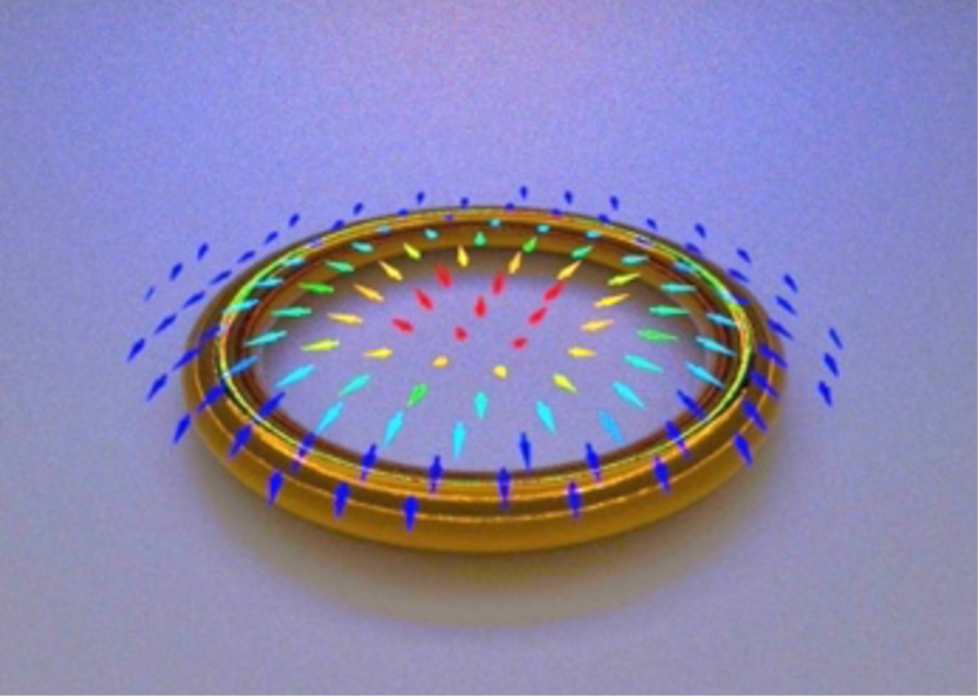Skyrmion Generation in a Plasmonic Nanoantenna through the Inverse Faraday Effect
Xingyu Yang1, Ye Mou1, Bruno Gallas1, Sébastien Bidault2, Mathieu Mivelle 1,*
1Sorbonne Université, CNRS, Institut des NanoSciences de Paris, INSP, Paris, France
2Institut Langevin, ESPCI Paris, Université PSL, CNRS, Paris, France
Skyrmions are topological structures characterized by a winding vectorial configuration that provides a quantized topological charge. In magnetic materials, skyrmions are localized spin textures that exhibit unique stability and mobility properties, making them highly relevant to the burgeoning field of spintronics. In optics, these structures open new frontiers in manipulating and controlling light at the nanoscale. The convergence of optics and magnetics holds therefore immense potential for manipulating magnetic processes at ultrafast timescales. Here, we explore the possibility of generating skyrmionic topological structures within the magnetic field induced by the inverse Faraday effect in a plasmonic nanostructure [1]. Our investigation reveals that a gold nanoring, featuring a dark mode, can generate counter-propagating photocurrents between its inner and outer segments, thereby enabling the magnetization of gold and supporting a skyrmionic vectorial distribution. We elucidate that these photocurrents arise from the localized control of light polarization, facilitating their counter-propagative motion. The generation of skyrmions through the inverse Faraday effect at the nanoscale presents a pathway towards directly integrating this topology into magnetic layers. This advancement holds promise for ultrafast timescales, offering direct applications in ultrafast data writing and processing.

Illustration of a ring-shaped gold plasmonic nanoantenna for magnetic field generation by inverse Faraday effect supporting a skyrmionic topology.

